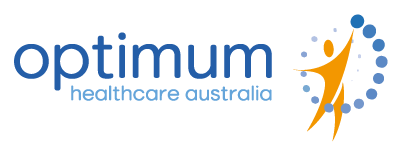How Physiotherapy Helps NDIS Participants Recover from Stroke ?
How Physiotherapy Helps NDIS Participants Recover from Stroke
Recovering from a stroke can be a complex journey, but physiotherapy provides essential support to help individuals regain strength, movement, and confidence. For NDIS participants, physiotherapy is a valuable tool in achieving independence and improving quality of life.
The Physical Impact of Stroke
A stroke happens when blood flow to part of the brain is blocked, depriving brain tissue of oxygen and nutrients. This can lead to disabilities such as muscle weakness, loss of movement on one side of the body, balance issues, and pain or spasticity. Stroke survivors often face challenges with mobility, energy, and coordination, but physiotherapy can help address these.
How Physiotherapy Aids Stroke Recovery
- Regaining Strength and Mobility
Physiotherapists work to strengthen weakened muscles and rebuild basic movement patterns, focusing on exercises that retrain the brain-to-muscle connection. This allows individuals to perform fundamental movements like standing, walking, and grasping. - Improving Balance and Coordination
Balance exercises help prevent falls and improve confidence. Physiotherapists use exercises such as standing on one foot or walking along a line to enhance coordination and stability. - Reducing Pain and Muscle Stiffness
Post-stroke spasticity, or tight muscles, is common. Physiotherapy uses gentle stretching and manual therapy to ease muscle stiffness, increasing comfort and mobility for daily activities. - Building Confidence and Independence
As clients regain physical abilities, they experience a boost in confidence. Physiotherapists set achievable goals, like walking a certain distance or standing up independently, to encourage and support the recovery journey. - Developing Long-Term Functional Skills
Physiotherapists provide clients with exercises to continue at home, helping maintain progress after formal therapy ends. These tools are essential for managing ongoing symptoms and preventing regression.
Steps in the Physiotherapy Recovery Process
During an initial assessment, physiotherapists evaluate physical abilities and set recovery goals based on the client’s unique needs. Treatment plans are tailored to each person’s limitations and strengths, focusing on gradual exercises that progress over time. Physiotherapists provide exercises for clients to practice independently at home, reinforcing in-session gains.
How to Maximize Your NDIS Funding for Physiotherapy
Work with a Support Coordinator: For NDIS participants, a Support Coordinator can help prioritize physiotherapy sessions in your NDIS plan.
Request Physiotherapist Reports: Detailed progress reports from your physiotherapist help NDIS assessors understand your ongoing needs and secure continued funding.
Consider Assistive Technology: NDIS funding may cover devices like walkers or balance aids to support recovery and mobility.
Inspiring Success Stories
Optimum Healthcare has helped many stroke survivors regain independence. For instance, David, a stroke survivor, began physiotherapy unable to walk. Through consistent work, he progressed from bed-based exercises to using a walker and, ultimately, to walking independently. His commitment to therapy and practice at home was key to his success.
Final Thoughts
Physiotherapy offers critical support for stroke recovery, helping NDIS participants reclaim independence and improve their quality of life. At Optimum Healthcare, our experienced therapists are dedicated to guiding clients through recovery. Reach out today to learn more about our physiotherapy services and how to maximize your NDIS funding for the care you need. 
